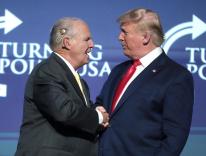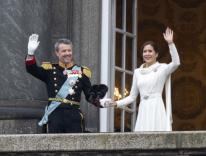In an effort to stop thinking about health care reform for a while, I've been reflecting on the recent debate between Terrence Tilley and Thomas Weinandy that was featured on these pages a week back (click here and here). Most people reacting to the debate seemed quick to shove it into the Church cracks down on another theologian box and move on. I think that is regrettable because the debate does raise some important theological questions that deserve to be wrestled with more seriously.
Re-reading their respective contributions, I find I disagree with Weinandy about the academic quality of Tilley's address. I dont think a presidential address is the same thing as an academic paper and -- within the confines of the genre -- I think Tilley made a solid contribution to some important current debates. I also think that Weinandy occasionally edges into rhetorical overstretch in ways that undermine the effectiveness of his argument. That is a shame, because some of Tilley's ideas could benefit from a more rigorous critique.
To my mind, the most fundamental question in the debate is one of theological method. Where do we begin in Christology? Do we begin with the Church's dogmatic statements about Jesus, and seek, through the work of theological reflection, to render them more intelligible for our age? Or are the statements themselves so much the product of a particular cultural and historical moment that they are no longer intelligible in contemporary culture. If that is the case, we may need to bring an even earlier strata of the tradition into dialogue with contemporary culture if the Gospel is to be heard anew. I would identify Tilley with the second position and Weinandy with the first.
Both of these positions have their merits. Tilley is no doubt correct that much of the technical theological language of the first millennium -- physis, ousia, prosopon -- is increasingly difficult to translate into a modern idiom. Even if one were inclined to discount this on the grounds that Western philosophy remains a set of footnotes to Plato, the challenge of translating concepts shaped by the Western tradition into the language of the East -- one of the central theological challenges of the new millennium -- remains a serious one.
I have concerns, however, about what I perceive to be Tilley's solution, which is to start further back, as it were. In this approach, the conciliar definitions are understood to be the product of efforts to translate the Gospel into a Roman culture still shaped by Hellenism. Our task is to do the same thing in our time, bringing the Gospel into dialogue with post-modern culture.There is an unstated -- but very important -- assumption here that it is possible to recover a more primitive form of the Gospel that can be pried loose from the Churchs dogmatic tradition. The question is where we are to find this primitive Gospel. Is it found in a historical reconstruction of the early Church? The canonical New Testament? A canon within a canon that privileges the (allegedly) low Christology of the Synoptic Gospels over the higher Christology of John and the Pauline corpus? The non-canonical Gospels? One of the many colorful varieties of the historical Jesus?
Roger Haight -- who Tilley cites as an example of a theologian who is trying to bring the Gospel into dialogue with contemporary culture -- wrestled with exactly this issue in his book Jesus: Symbol of God. Haight was fairly clear about his preference for relying primarily on the Synoptic Gospels as the ground for his Christology. Haight described his method as genetic, in the sense that he was trying to recover the underlying genetic code from which subsequent Christology developed.The example is important because Tilley argues that the problem with the CDF's efforts to police the boundaries of Christology is that they are insisting -- inappropriately -- that theologians use language that is no longer understood in contemporary culture. Although he does not draw the connection explicitly, the clear implication is that Haight's approach yields concepts that are functionally equivalent to those found in the conciliar definitions. I know that I am not alone, however, in believing that Haight's efforts at genetic re-engineering of the tradition, while well intentioned, ultimately failed to do justice to what Christians have historically believed about Jesus Christ.
It is not inconceivable that one could use this genetic method and obtain different results. Rather than privileging the synoptic Gospels, one could assess the New Testament canon as a whole, which would result in a Christology more balanced in its high and low aspects. Raymond Brown's Introduction to New Testament Christology might be an example of this type of approach.
At the end of the day, though, I am still not convinced of the wisdom of reducing the conciliar formulas to the status of theological opinion. While the historical factors that shaped the early councils are important, the fact remains that their statementswhich we believe were inspired by the Holy Spiritenjoy the highest level of doctrinal authority that the Church can impart. They must remain the boundaries for theological speculation about Jesus.The question is how those boundaries should operate. Here, I disagree with Weinandy's argument that dogmas are to be understood primarily as ontological truth claims. My own bias is toward some version of George Lindbecks position that doctrines primarily serve a regulative role, making clear what we cannot say about God. Historically, most anathemas were formulated in the negative, i.e. they tell you what you can't believe rather than what you can. In this view, the purpose of the Chalcedonian dogmas is to prevent us from speaking about Jesus in ways that either diminish his divinity or his humanity.
I'm not entirely satisfied with Lindbeck's position, though, because I also feel that doctrines are not merely regulative statements but also meditations on the mystery of God. Like scripture, they have multiple layers of meaning. Karl Rahner, in his famous 1951 essay Chalcedon: End or Beginning, suggested that we continue to probe the meaning of the Chalcedonian formulas not because they are false but because they are true. For all his talk about a Christology from below, though, Rahner did not suggest that we roll back the clock and reconstruct Christology from the New Testament data alone. It is the Chalcedonian definition itself that was the spark for a very creative reflection that draws from both conciliar language and Rahner's transcendental anthropology. I think a similar approach -- one that incorporates the insights of post-modernity into our Christian anthropology -- could bear similar fruit today.
ERRATUM: An earlier version of this post incorrectly identified Fr. Weinandy as a bishop. He is a priest. The author regrets the error.
Please email comments to [email protected] and join the conversation on our Facebook page.
Previous Story
Evolution and Ignorance
Next Story
Bug hunt. (updated)


